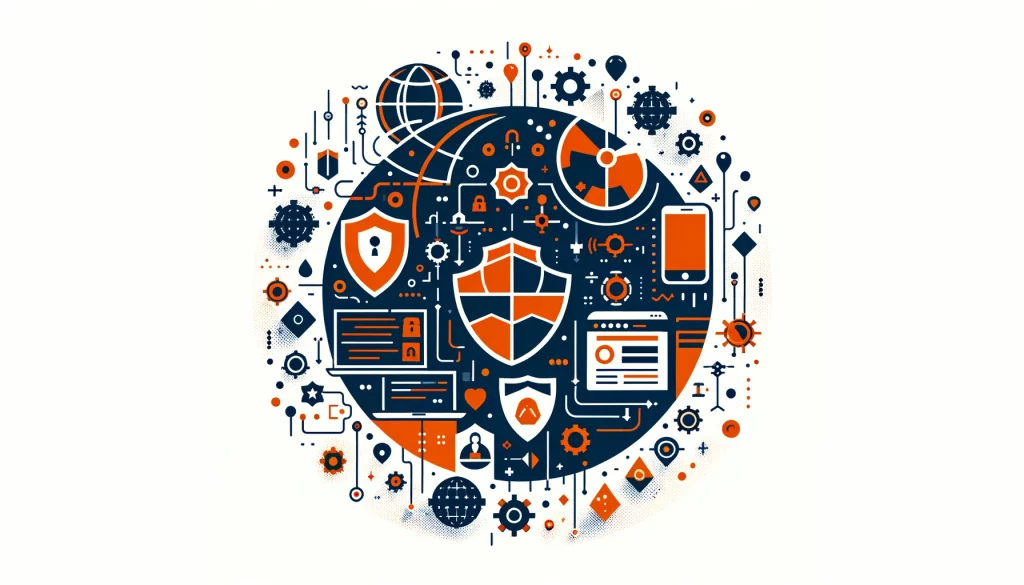
Preparing for the Future of Cyber Warfare: Risks and Strategies

Cyber warfare poses a significant threat to national security. Countries and non-state actors alike are leveraging technology to gain strategic advantages over their adversaries. This article discusses cyber warfare. It covers the different types of cyber warfare and the significant impacts it can have.
Understanding Cyber Warfare
Cyber warfare happens when one country uses digital attacks to disrupt another country’s computer systems, causing potential harm. These attacks can target important systems like government networks, financial systems, power grids, and communication channels. Cyber warfare is when one country attacks another using technology. No clear definition exists, but it usually involves a nation using cyber attacks against another nation.
Types of Cyber Warfare
Cyber warfare can take many forms, each with its own unique characteristics and potential for harm. Some of the most common types of cyber warfare include:
- Espionage: This involves using cyber attacks to gain unauthorized access to sensitive information, such as military plans, intellectual property, or personal data.
- Sabotage: Cyber attacks can mess up important things like power grids, transportation, or communication networks.
- Countries use cyber attacks to spread false information or propaganda. They do this to sway public opinion or damage the reputation of their enemies.
- Cyber attacks can disrupt financial markets, steal intellectual property, or damage a country’s economy.
- Hybrid Warfare combines cyber attacks with traditional military operations, like using cyber attacks to weaken enemy defenses before a physical attack.
The Evolution of Cyber Warfare
As technology continues to advance rapidly, so too does the sophistication of cyber warfare tactics. In recent years, there has been a surge in the frequency and severity of cyber attacks targeting nations worldwide. Cyber warfare is a real threat, from the Stuxnet virus in Iran to the WannaCry attack on computers worldwide.
One of the biggest challenges with cyber warfare is the difficulty in attributing attacks to specific actors. Attackers can carry out cyber attacks without revealing their identity, making it difficult to assign blame to nations. In traditional warfare, people usually know who the aggressor is. This has caused increased tensions between countries as they deal with the threat of unseen enemies that can cause widespread harm.
Examples of Cyber Warfare
There have been numerous examples of cyber warfare in recent years, highlighting the growing threat posed by this new form of conflict. Some notable examples include:
- Stuxnet was a virus discovered in 2010. It targeted Iran’s nuclear facilities’ control systems. The virus caused significant damage to Iran’s nuclear program. Many people widely believe that the United States and Israel developed it.
- NotPetya was a ransomware attack in 2017 that began in Ukraine and spread globally, causing billions in damage. Experts attributed the attack to Russia and viewed it as part of the ongoing conflict between Russia and Ukraine.
- In 2020, Russian hackers infiltrated numerous U.S. government agencies and private companies. They did this by exploiting a compromised software update from SolarWinds, a major IT company. No one noticed the attack for months, and they considered it one of the most advanced cyber spying operations ever.
- Cyber Attacks on Estonia: In 2007, Estonia experienced a series of massive cyber attacks that targeted the country’s government, media, and financial institutions. The attacks, thought to be from Russia, caused chaos and showed that even advanced countries are at risk from cyber threats.
The Consequences of Cyber Warfare
The impact of cyber warfare can be devastating, potentially causing widespread disruption, financial losses, and even loss of life. A cyber attack on a power grid could cause chaos by leaving millions without electricity, leading to civil unrest. Attacking a country’s financial systems can severely harm its economy, causing lasting damage to infrastructure and citizens.
In addition to the direct consequences, there are significant indirect costs associated with the warfare. Nations must invest heavily in cyber security measures to protect critical infrastructure, diverting resources from other crucial areas like healthcare, education, and social welfare. Additionally, cyber attacks can make people trust the government less and weaken democratic systems.
Preparing for Cyber Warfare
Given the increasing prevalence of cyber warfare, nations must take proactive measures to defend against these threats. This requires a multi-faceted approach involving collaboration between government agencies, private sector organizations, and international partners.
One key aspect of preparing for cyber warfare is conducting regular risk assessments and simulations, known as cyber wargames. These exercises allow nations to test their readiness for cyber attacks, identify vulnerabilities, and develop effective response strategies.
Cyber wargames involve experts in cyber security, military, and intelligence working together to combat cyber threats. These experts collaborate and share information during the wargames. The goal is to enhance their ability to address and respond to cyber threats effectively.
One important aspect is using a layered security approach to protect the cyber ecosystem. Implement this approach at different levels, such as individual devices, networks, national infrastructure, and international cooperation. Governments must work closely with private sector organizations to promote cybersecurity best practices, such as regular software updates, employee training, and incident response planning.
The Role of International Cooperation
Given the global nature of cyber threats, international cooperation is crucial for effective cyber defense. Countries need to collaborate to set rules for good behavior online and punish those who break them. This requires building trust and fostering dialogue between nations, even in the face of geopolitical tensions and competing interests.
The NATO Cooperative Cyber Defence Centre of Excellence (CCDCOE) in Tallinn, Estonia, is an example of international cooperation in cyber defense. This group of experts from NATO countries and partners work together to research, train, and practice cyber defense strategies. The CCDCOE created the Tallinn Manual, a detailed guide on using international law for cyber warfare. Policymakers and legal experts around the world widely use it.
Conclusion
As the world relies more on technology and connections, the risk of digital warfare will keep increasing. Countries need to focus on protecting against cyber attacks to keep their important systems and people safe from harm. This needs teamwork from government, private sector, and international partners to create a safer and stronger digital environment.
While the challenges posed by cyber warfare are significant, they are not insurmountable. Countries can protect against cyber threats by investing in research, promoting security best practices, and working together internationally. This helps ensure global stability and prosperity. Stay alert and prepared for challenges that may arise from global conflicts in the uncertain future.
